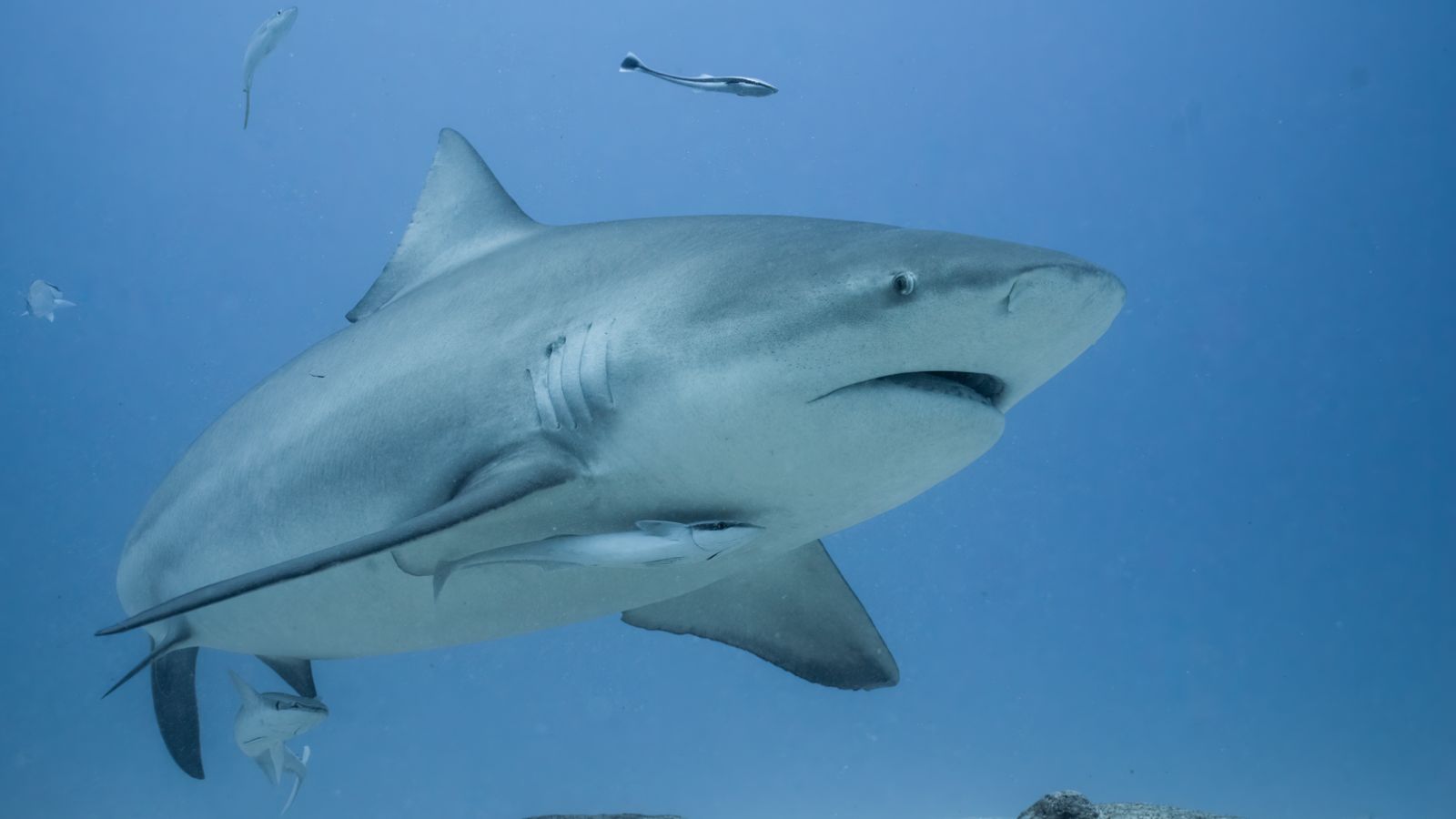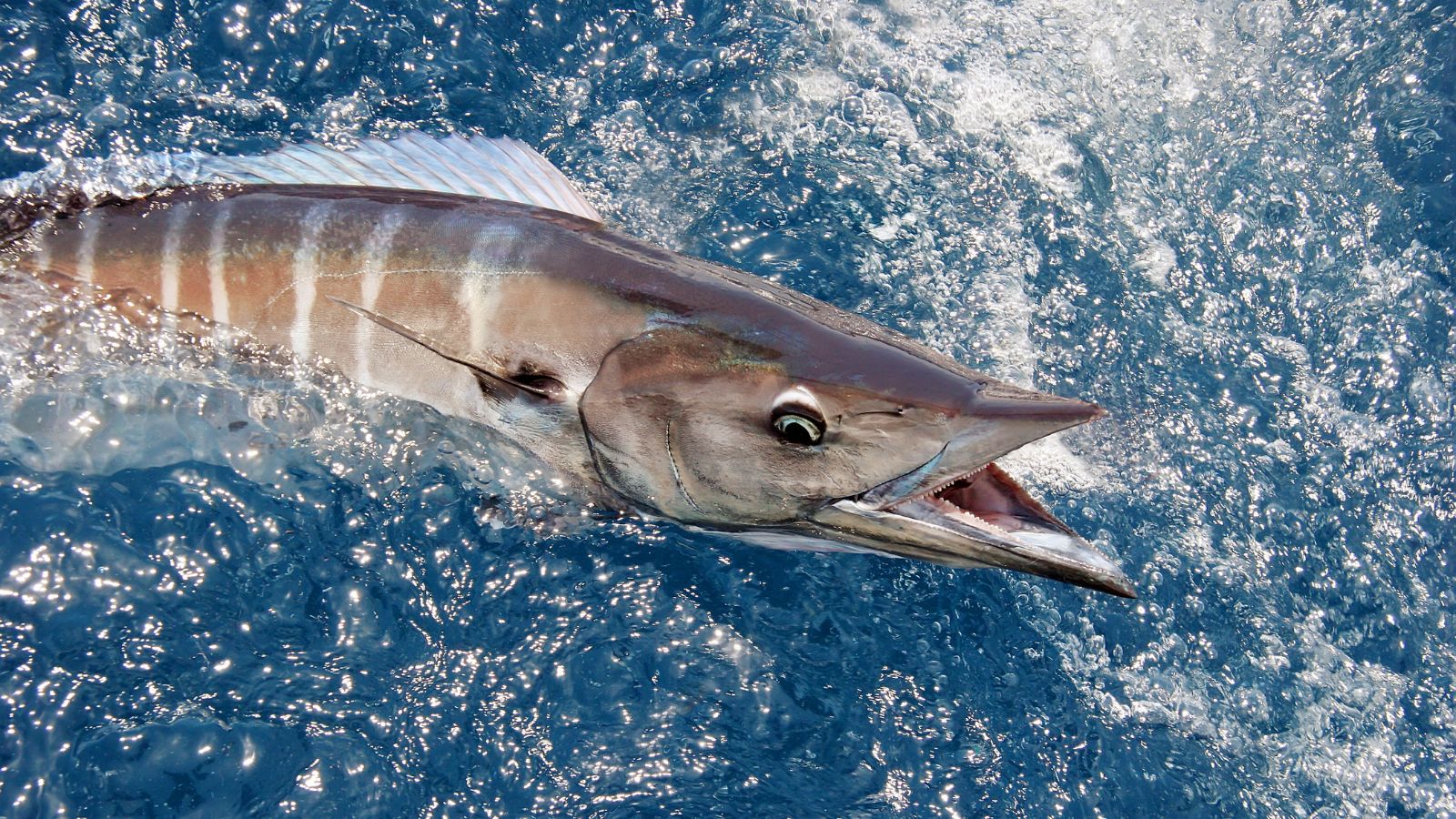The Pacific Ocean is filled with all sorts of creatures, and many are out there to kill us. From the feared great white shark to the poisonous bluefin tuna, we’ve compiled a list of 17 fish in the Pacific Ocean you should stay as far away from as you can.
Great White Shark

The great white shark is one of the largest predatory fish in the ocean. It also has one of the most powerful bites in the animal kingdom, estimated at 18,000 newtons. Although humans survive 90% of encounters with great whites, they’re still responsible for the most unprovoked fatal encounters among all shark species.
Pufferfish (Fugu)

A ScienceDirect paper reveals that pufferfish contain a poison called tetrodotoxin, which is 1,200 times more toxic than cyanide. There’s no known antidote for this toxin, and death from it occurs only six hours after it enters the body. However, this hasn’t stopped people from including pufferfish in luxury cuisines.
Bull Shark

Bull sharks are more aggressive than great whites and tiger sharks despite not killing as many people. They are said to have the highest testosterone levels in the entire animal kingdom. Their habitat around coastal waters increases the chances of human encounters.
Lionfish

Lionfish are an invasive species in many parts of the world, especially the Pacific, and the venomous spines lined along their back can cause extreme pain and illnesses in humans. They’re a threat to the coral reef due to their predatory nature and their lack of natural predators.
Moray Eel

Even though the mucus of the moray eel can be toxic when ingested, this isn’t the most worrying feature about it. These marine creatures have a dangerous bite that can cause you to lose a digit or, as reported by the NIH, even an entire arm. You may also suffer deadly infections on the wounds.
Stingrays

Stingrays aren’t venomous, but humans have been reported to die from puncture wounds to the abdomen, chest, or neck inflicted by stingray tails, which double as sharp barbs. A sting from one is excruciatingly painful, and there are also cases where people have died from serious infections like tetanus.
Crown-of-Thorns Starfish

The crown-of-thorns starfish is covered in sharp spines, and to further protect it from predators, these spines are armed with saponin—a chemical compound that causes intense pain and also destroys red blood cells. The crown-of-thorn starfish is also known to be a threat to the coral reef.
Stonefish

Stonefish hold the top spot as the most venomous fish in the world, and a sting from their dorsal fins can lead to painful swelling, necrosis, and death within only two hours. Even after getting appropriate treatment, numbness can last for a few weeks.
Box Jellyfish

One of the most venomous marine creatures known to man, the box jellyfish has nematocysts—tiny, poisonous darts in its tentacles—that could lead to many complications. A sting from one can cause paralysis, cardiac arrest, and even death, and the NOAA says this can all happen within a few minutes.
Sperm Whale

Sperm whales aren’t venomous or predatory in nature towards humans. But their sheer size and strength make encounters with them extremely dangerous. Their bite is said to weigh about 10,000 newtons, and scientists say that their clicks are so loud that they can kill humans within their vicinity.
Mako Shark

The mako shark, away from the tiger, great white, and bull shark, is a special species on its own. It’s the fastest shark in the ocean, and although unprovoked attacks are rare, they can be threatened enough to be aggressive man-eaters. Mako sharks are also considered too fast to be studied in captivity and too dangerous to be approached in the wild.
Porcupinefish

Also called the blowfish or globefish, the skin, liver, and intestine of the porcupinefish are loaded with tetrodotoxin—yes, the same one found in pufferfish. Ingesting this can lead to severe cases of numbness, nausea, muscle weakness, and death. The spines on their backs can cause injuries if handled carelessly, too.
Bluefin Tuna

Although the size and speed of the bluefin tuna can cause severe harm to humans upon collision, this is the least of your worries. You already know how common they are in human delicacies. But what you may not know is that they contain unsafe amounts of mercury that can cause damage to our brains and hearts.
Giant Trevally

Capitalizing on its sheer size, speed, and strength, the giant trevally has been recorded to ram into spearfishers and anglers, displaying aggressive behaviors when they think they’ve found prey. You may even find them circling boats looking for something to eat, just like sharks do.
Pacific Barracuda

Attacks on humans are rare when it comes to barracuda, but they aren’t the safest marine animals to be around. These creatures have sharp teeth and are known to display erratic and aggressive behaviors, especially when they encounter bright lights or shiny objects.
Scorpionfish

Like stonefish, the scorpionfish is another highly venomous species with toxins stored in spines lined along its back. These camouflaged bottom dwellers can cause skin damage that’s so bad you may require surgery. The University of Florida tells us that punctures to our chest or abdomen may lead to death.
Wahoo

The wahoo, or its skin, is linked to ciguatera poisoning, which can cause nausea, vomiting, and damage to our nervous systems. However, this hasn’t stopped many from eating it as food. The fish’s sharp teeth and strong movements also make it hazardous for humans to handle without care.
Up Next: 19 American Foods that Are Not Allowed in Other Countries

We can debate all day about who has the safest food supply in the world. Though, I’d bet you would be surprised at how many everyday American foods are banned in other countries. Most are due to chemical additives and pesticides, which, in places like the EU, cannot be approved for use unless proven safe. Let’s take a look at 19 of them.
19 American Foods that Are Not Allowed in Other Countries
19 Things That Will Happen When You Stop Drinking Alcohol

Whether you identify as an alcoholic or a casual drinker, alcohol can have a significant negative impact on your health. This is why more and more people are choosing to go cold turkey for the sake of their well-being. If you’re considering going sober but need a little more convincing, we’ve got you covered. Here are 19 things that will happen when you stop drinking alcohol.
19 Things That Will Happen When You Stop Drinking Alcohol
17 Things Guests Actually Notice Right Away About Your House

Inviting people into your home is a big deal. You may be very house-proud or house-conscious, and if you are either, you’ll likely get anxious about hosting. If this sounds like you, stop worrying and focus on the following 17 things that guests actually notice right away about your house.
17 THINGS GUESTS ACTUALLY NOTICE RIGHT AWAY ABOUT YOUR HOUSE
